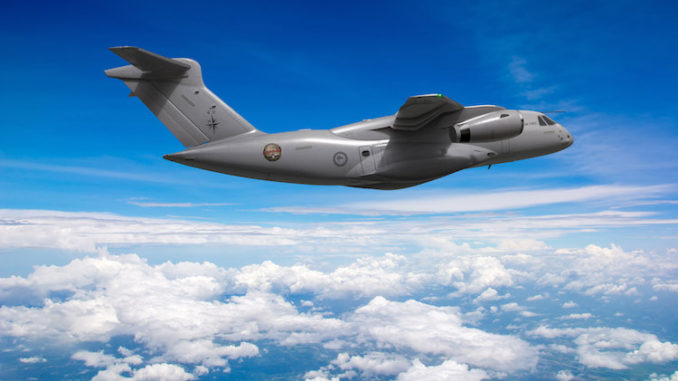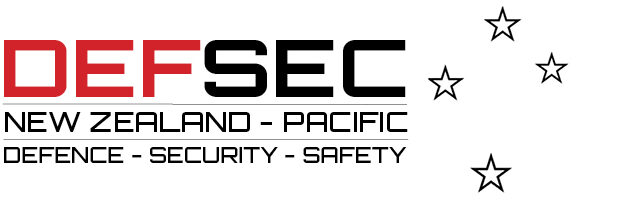
As its airlift flagship edges closer to Full Operational Capability certification, Embraer reflects on shared battlefield history and highlights the capabilities and features of the KC-390.
The 1stBrazilian Fighter Squadron, Brazilian Armed Forces, distinguished itself by extraordinary heroism in connection with military operations against the enemy of the United States in the Mediterranean Theatre of Operations on 22 April 1945. By heroic services involving utmost gallantry and a display of consummate skill in armed reconnaissance and fighter-bomber attacks, and by demonstrating superb tactical coordination with the Fifth Army, they contributed directly to the Allied crossing of the Po River in northern Italy….
The professionalism, dedication to duty, and extraordinary heroism demonstrated by the members of the 1stBrazilian Fighter Squadron are in keeping with the finest traditions of the military service and reflect the highest credit upon them selves and the Armed Forces of Brazil.
[An excerpt from the US Presidential Unit Citation (Air Force) for Extraordinary Heroism to 1stBrazilian Fighter Squadron, Brazilian Armed Forces, signed by Ronald Reagan]
When turning to the future, it is often important to reflect on the past to see what common bonds were once established. Few New Zealanders would be able to tell stories of their interactions with the Brazilian Forces during the Second World War. Nonetheless, they were there, fighting together during the many battles that were fought as Allied troops and planes pushed north through Italy in 1944-45.
New Zealand troops were on the ground at the time when Brazilian P47 Thunderbolt pilots were in the air. All had the common goal to push German forces out of Italy, which they did, with distinction, together.
Fast forward to today, and the bonds that were made so many years ago remain.
Multi-mission airlifter
The Brazilian KC-390 is the most modern and capable, medium sized, multi-mission tactical transport aircraft in the market today and it is ready to contribute to the New Zealand’s current and planned Defence Force capabilities.
New Zealand, like Brazil has operated the C130 Hercules for many years and has flown it to its absolute limits and proven its capabilities. But now the tide is turning toward new capabilities, modern and reliable systems, and more cost-effective maintenance and support methodologies woven into new aircraft for the future.
Enjoying this article? Consider a subscription to the print edition of Line of Defence Magazine.
Equipped with International Aero Engines V2500 turbofan engines, the latest avionics, a rear ramp, and an advanced cargo handling system, the KC-390 is capable of carrying up to 26 metric tons of cargo at a maximum speed of 470 knots (870 km/h), with ability to operate in austere environments, including unpaved or damaged runways.
The aircraft can carry pallets, helicopters, armored wheeled vehicles, and troops. The performance of the KC-390 is benefited by a modern fly-by-wirecontrol system with integrated technology that lowers the workload of the crew and increases the safety of its operation.
The KC-390 can refuel other airplanes in flight with the installation of two removable internal fuel tanks. The aircraft can also be refueled in flight, thus providing greater flexibility for longer missions. An advanced self-defense system increases the aircraft survival capability in hostile environments.
Ticking the boxes
The first production KC-390 for the Brazilian Air Force has recently been finished and flown, with the next three aircraft marching through the production line ready for operational service in 2019.
Certifying the KC-390’s aircraft basic platform is the Brazilian aviation authority ANAC (Agência Nacional de Aviação Civil). The aircraft is undergoing certification to the equivalent standard of United States Federal Aviation Regulations (FAR) Part 25 Air Transport Category, which will confirm that the airframe complies with the highest civilian airworthiness standards.
A second tier of certification for the KC-390 is coming from the Brazilian Air Force (FAB) and the Brazilian Department of Science and Aerospace Technology (DCTA) which is Brazil’s national military research centre for aviation and space flight.
One of the four institutes within DCTA is the Industrial Promotion and Coordination Institute (IFI). IFI recognises the ANAC certification and is responsible for the full compliment of military mission accomplishment and systems that the KC-390 will deploy.
This certification process will result in Full Operational Capability (FOC) of the KC-390 including air-drop, air-land, parachuting, aerial refuelling, search and rescue, firefighting, aeromedical evacuation, self-protection, Antarctica operations, damaged and semi-prepared runway operations and more.
Current certification plans have IFI completing FOC in 2019, when the full complement of the KC-390s military capabilities will be proven and cleared for operational employment with the FAB.
Into the future
The New Zealand 2018 Defence Strategic Policy Statement concludes that the Defence Force requires a mix of capabilities with broad utility and that enable it to remain relevant and make credible contributions to international efforts in support of peace and security. Given its new capabilities, modern and reliable systems, and more cost-effective maintenance, the KC-390 is the best in class platform to deliver this.








